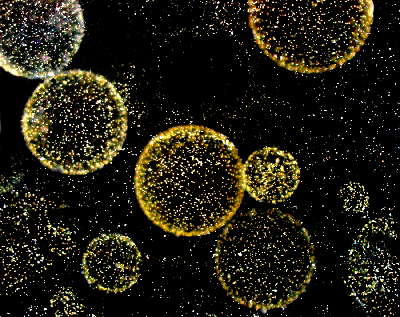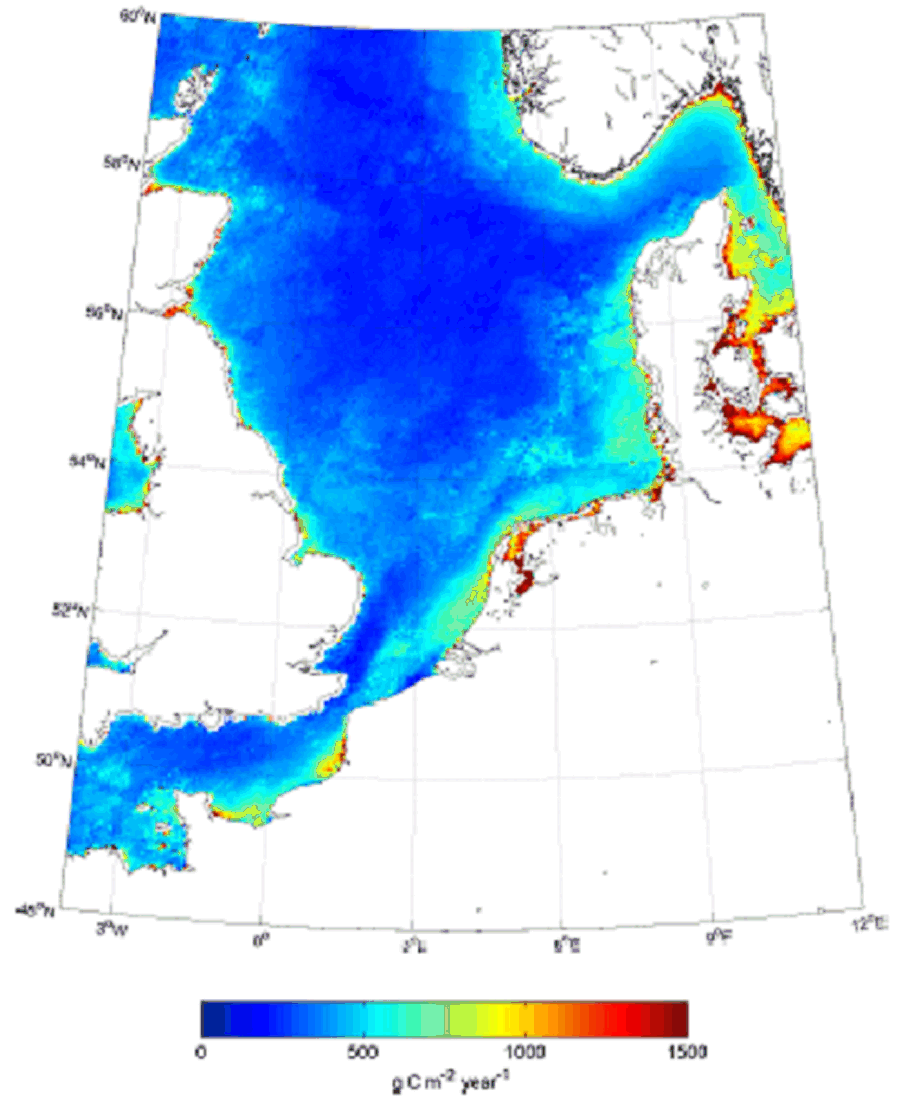1. Light and Life (4/8)
Marine plants
Marine plants are mainly phytoplankton (floating algae). As we have learned in the previous page, plants grow well and fast if the conditions are right. When these plants are present in the water, they can be seen by us and by satellites. Look at the images on this page. All show phytoplankton, from a close up with the microscope to a glass of water to the observation by a very good satellite from 800 km above the Earth surface.
Besides carbohydrates, phytoplankton also contains pigments.
Question: What’s the colour of the slimy muck in the water and attached to the windows of for example in your fish tank if you forgot to clean it?
Primary production from remote sensing
Primary production is the making of organic compounds (carbohydrates) from carbon dioxide through photosynthesis.
To grow, phytoplankton needs light (as explained above) but also favourable temperatures and nutrients.
The amount of sunlight reaching the water surface, the green colour of the phytoplankton in the water,
and the sea surface temperature can all be detected with remote sensing.
If we assume a certain constant ratio between the pigment (Chlorophyll molecules) and the carbon atoms in carbohydrates,
we can therefore derive a crude estimate of primary production from remote sensing.
Question: What about the nutrients? Can they been seen by remote sensing?
You can learn more about how fast carbon is fixed in the next chapter on Phytoplankton Growth.


